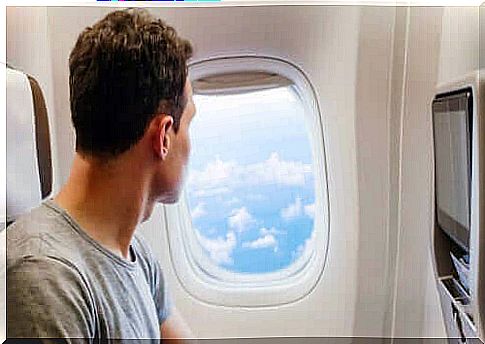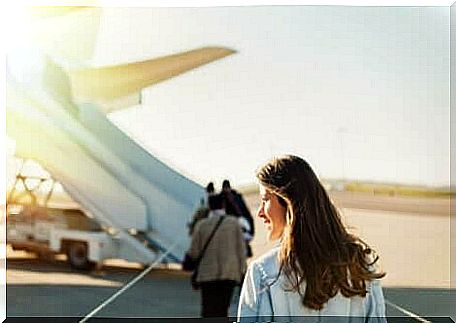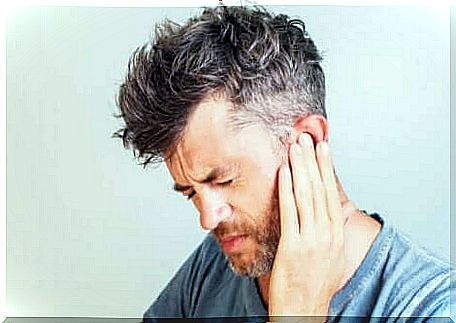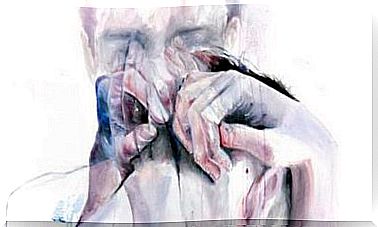What Is Barotitis Media And How Can You Treat It?

Air pressure in airplanes is lower than what we experience at sea level. As a result, it can cause a situation known as barotitis media.
Due to the increase in international air travel in recent decades, more and more people have to deal with the changing air pressure in an airplane cabin.
A large number of passengers experience discomfort in the middle ear, which occurs when the aircraft ascends quickly to reach the correct altitude, or during descent.
In most cases, this discomfort is temporary, but some people are unable to compensate for the pressure in the middle ear. This is called barotitis media. Read on to find out what it is and how to treat it.
What exactly is barotitis media?
This condition is also known as barotrauma. As we mentioned, it is an imbalance of pressure in the middle ear that causes pain and possibly even damage in the ear. This is more common in children than adults.
To better understand this problem, we need to discuss some general concepts about the ear. That will help us to know how to prevent and treat this condition.
How does the middle ear work?
The middle ear is an air-filled space, closed off from the outside by two different structures. On one side we have the eardrum and on the other side the Eustachian tube. The latter separates the middle ear from the pharynx.
The pressure in the middle ear should be the same as that of the surrounding area. Only then can the eardrum vibrate and fulfill its function in hearing.
When we yawn or swallow, the Eustachian tube opens briefly, creating a small airflow that balances the pressure.
When the Eustachian tube does not function properly, pressure differences arise between the middle ear and the outside environment. This can lead to barotitis media.
The most common cause of barotrauma is flying in an airplane. However, there are also other causes. This includes activities such as:
- deep sea diving
- mountaineering
- the use of decompression chamber
What happens in an airplane?

Commercial aircraft have pressurized cabins, with the same pressure that exists at altitudes between 2,100 and 3,000 meters. This is a lower pressure than the pressure that exists at sea level.
As the plane ascends and descends, the atmospheric pressure changes and as a result, the pressure in the middle ear must also change.
This change should be gradual and balanced when we swallow normally. The air will then spontaneously move in or out of the middle ear through the Eustachian tube.
Failure to do so, however, causes pressure and stretching in the eardrum, resulting in pain and temporary hearing loss.
In very severe cases, bruising or bleeding of the eardrum may occur. Fluid can also form in the middle ear and, in the worst cases, the eardrum can rupture. There is a feeling of tension in the ear and the person in question may experience tinnitus symptoms.
What to do if barotitis media occurs?

Most mild ear problems will heal on their own over time, including rupture of the eardrum. However, this depends on whether the Eustachian tube is functioning normally again. Hearing usually also recovers.
In some cases, a doctor may prescribe oral decongestants, antihistamines, and even antibiotics. All this helps keep the Eustachian tube clear. Taking painkillers will also help to reduce the pain.
In some cases, a fistula may develop. This is an abnormal gap between the middle and inner ear and causes vertigo. In such an emergency, an ENT specialist should be consulted to assess the need for surgical repair.
Myringotomy (a small surgical incision made in the eardrum) and tympanostomy (inserting a tube into the eardrum) can help prevent barotitis media and balance pressure in the middle ear. They are also used as a treatment, as they help to drain the exudate.
What precautions can we take when traveling by air?
When we travel by plane, we can help our ears balance the pressure during takeoffs and descents to minimize discomfort or damage. This is possible by using one of the following methods:
- Yawn or perform a mild Valsalva maneuver. This is pretending to exhale while keeping your mouth closed and pinching your nose. It is also called ‘clearing’.
- Chew gum and swallow often.
- Eat sweets.
- You can offer babies a bottle or pacifier so that they suck.
- Sometimes oral decongestants, antihistamines, and nasal sprays can be used before flying, as long as they are prescribed by a doctor.
- Experts have designed earplugs to reduce pressure changes, but their effectiveness has not yet been proven.
If you have to fly, it is advisable to visit your pediatrician or ENT doctor for advice. Preventing barotitis media, especially in the case of people with allergies or who have some kind of infection, is the key to improving your well-being during the trip.








